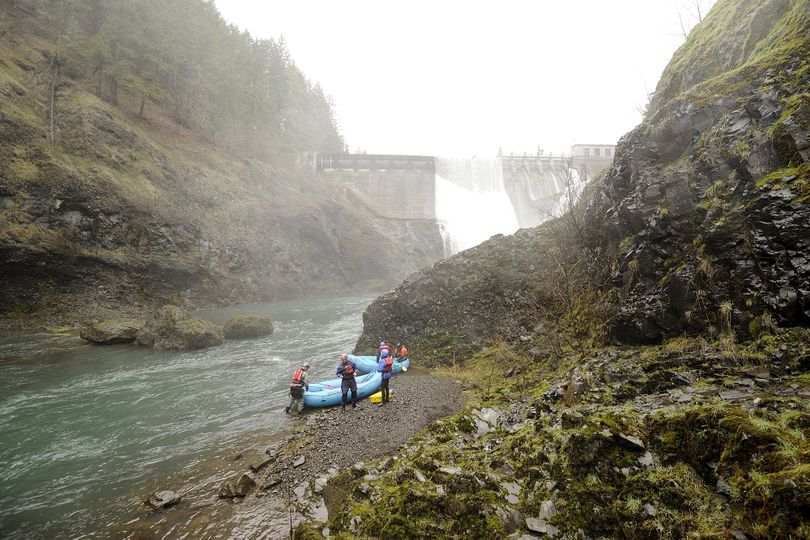Sunken boats retrieved before Condit Dam is breached

FISHING– Anglers will have to clear off the lower portion of the White Salmon River in southwest Washington for 12 hours on Saturday (Sept. 17) to allow an interagency clean-up team to remove derelict boats, camping gear and other debris before Condit Dam is breached Oct. 26.
The river mouth downstream of the Highway 14 Bridge will remain open.
About 100 waste sites and at least 15 sunken boats have been identified for removal so they’re not flushed down into the Columbia when the 125-foot high PacifiCorp dam is breeched.
The demolition is designed to drain the 92-acre reservoir behind the dam in a quick six hours to flush out sediments that have accumulated behind the 97-year-old dam.
The dam breaching is expected to reopen open 14 miles of habitat for chinook salmon and 33 miles of habitat for steelhead that have been blocked since the dam’s fish ladder washed out in a 1918 flood.
The free-flowing river also is expected to protect critical bull trout habitat and benefit bears and other wildlife that feed on salmon in the waters that originate on the slopes of Mount Adams.
Fisheries staffers from several agencies are jumpstarting the fishery by using seine nets to collect returning salmon in the lower river. The mature fish will be trucked upstream around the dam and released in the upper river to spawn this season.
For updates, see www.pacificorp.com/condit as well as http://whitesalmontimelapse.wordpress.com/
